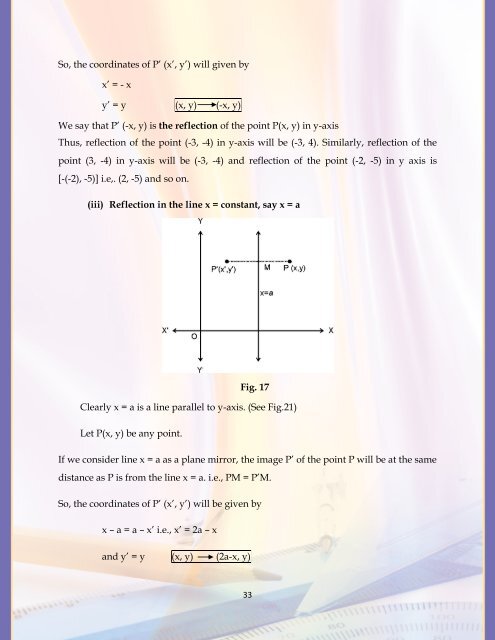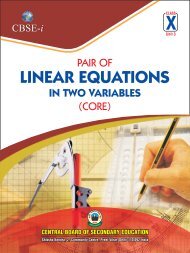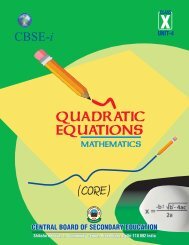CORE Coordinate Geometry and Transformations - New Indian ...
CORE Coordinate Geometry and Transformations - New Indian ...
CORE Coordinate Geometry and Transformations - New Indian ...
Create successful ePaper yourself
Turn your PDF publications into a flip-book with our unique Google optimized e-Paper software.
So, the coordinates of P‟ (x‟, y‟) will given by<br />
x‟ = - x<br />
y‟ = y (x, y) (-x, y)<br />
We say that P‟ (-x, y) is the reflection of the point P(x, y) in y-axis<br />
Thus, reflection of the point (-3, -4) in y-axis will be (-3, 4). Similarly, reflection of the<br />
point (3, -4) in y-axis will be (-3, -4) <strong>and</strong> reflection of the point (-2, -5) in y axis is<br />
[-(-2), -5)] i.e,. (2, -5) <strong>and</strong> so on.<br />
(iii) Reflection in the line x = constant, say x = a<br />
Fig. 17<br />
Clearly x = a is a line parallel to y-axis. (See Fig.21)<br />
Let P(x, y) be any point.<br />
If we consider line x = a as a plane mirror, the image P‟ of the point P will be at the same<br />
distance as P is from the line x = a. i.e., PM = P‟M.<br />
So, the coordinates of P‟ (x‟, y‟) will be given by<br />
x – a = a – x‟ i.e., x‟ = 2a – x<br />
<strong>and</strong> y‟ = y (x, y) (2a-x, y)<br />
33

















